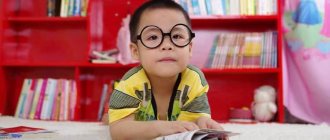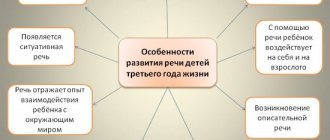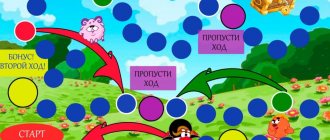Increased originality
Test questions 1. Explain the essence of the phenomenon of viscous friction. What is the nature of the internal friction forces of a fluid? Viscosity or internal friction is the property of fluid bodies (liquids and gases) to resist the movement of one part relative to another. This phenomenon determines the dissipation (absorption) of energy during deformation of the medium. During shear deformation, the viscosity is called shear viscosity. When the volume is deformed (universal compression), bulk viscosity appears. In this case, we will only touch upon the issue of shear viscosity. The essence of the phenomenon is that moving layers of gas or liquid entrain neighboring layers and, conversely, stationary layers (or moving at a lower speed) slow down faster neighboring layers. Thus, internal friction forces (or viscous forces) act between any adjacent layers of the medium under consideration. The mechanism by which these forces arise is the transfer of momentum (amount of motion) from one layer to another.2. What is the coefficient of dynamic viscosity? In what units is viscosity measured in the SI system?
The coefficient of dynamic viscosity is a value numerically equal to the force of internal friction with which one layer drags or slows down another layer of liquid, provided that the contact area of the layers and the velocity gradient . In the SI system, the unit of dynamic viscosity is taken to be the viscosity of a medium in which one layer drags or inhibits another with a force of , if the contact area of the layers and the velocity gradient are .
3. What forces act on a body moving in a liquid?
A body immersed in a liquid and remaining in equilibrium afloat is acted upon by two forces: the force of gravity and the buoyant force equal to it (and equal to the weight of the liquid displaced by the immersed volume of the body). Three forces act on a body immersed in a liquid and sinking: the force of gravity, which is unequal to it (less), the buoyancy force (equal to the weight of the liquid displaced by the immersed volume of the body), as well as the frictional force during movement, which largely depends on the speed of immersion and the viscosity of the liquid . A body immersed in a liquid and lying tightly at the bottom is acted upon by three forces: the force of gravity, the unequal buoyant force, and the reaction force from the bottom. In this case, the buoyant force decreases by an amount equal to the weight of the liquid occupied by that part of the body volume under which there is no water
4. Define laminar and turbulent fluid flow.
Turbulent flow is a fluid flow in which its particles perform unsteady and disordered movements along complex trajectories, leading to mixing of layers. Laminar is an ordered flow of fluid in which the trajectories of motion of neighboring particles differ little from each other.
5. Write down the Stokes formula and indicate the conditions for its applicability.
For spherical bodies, the modulus of the viscous friction force is determined by the Stokes formula (1) where r is the radius of the ball; V is the speed of its movement relative to the liquid. It is important to note that formula (1) is valid only in the case of laminar fluid flow relative to the ball (the speed of the ball should be small), and the fluid extends infinitely in all directions, i.e. The dimensions of the vessel in which the liquid is located must be much larger compared to the dimensions of the ball.
6. Determine the magnitude of the friction force acting on a steel ball with a diameter of 3 mm falling at a speed of 0.75 m/s in a liquid with a viscosity coefficient of 1.5 Pa.s. F=6*3.14*1.5*0.003*0. 5=0.063
7. Why does the ball accelerate at the beginning of its movement and then move uniformly? What is a velocity gradient? At the beginning of the ball's movement, the movement will be accelerated due to the acceleration of gravity. As the speed increases, the resistance force also increases, and the acceleration of the ball decreases. There comes a moment when the forces acting on the ball are balanced, the acceleration becomes zero, and the movement of the ball becomes uniform in section L. The velocity gradient is the change in the speed of two layers of liquid dV at the distance between the layers dX.
8. Write down the working formula, explain the conditions for its use and the reason for starting to measure time not from the surface of the liquid.
The upper mark is placed several centimeters below the upper level of the liquid to ensure uniform movement of the ball in the liquid. 9. List the main sources of measurement errors carried out in this work.
Article:
The sounds [g], [g'-gh], according to age-related speech therapy standards, appear independently in a child between the ages of 1 and 2 years. If at 2 years old the baby does not have the sounds [g], [g'], contact a speech therapist. If a child’s sound appears distorted or incorrect, it is necessary to contact a speech therapist as early as possible.
How to pronounce the sound [g] correctly?
- The tongue is spread wide, the tip is pulled away from the lower incisors;
- The back of the back of the tongue meets the soft palate.
- The soft palate is raised and pressed against the back wall of the pharynx;
- Lips and teeth are open;
- The air stream is warm and passes through the middle of the tongue.
- The vocal folds are closed and vibrate;
1). Articulatory features of the sound [ g ] .
[g] - consonant sound - in the oral cavity an obstacle is met by an escaping stream of air;
[g] - oral sound - the uvula is pressed to the back wall of the pharynx, the soft palate is raised, air enters only the oral cavity;
[g] – ringing sound. When the sound [g] is formed, the vocal cords are closed and vibrate, and a voice is formed.
[g] - hard sound - the middle part of the back of the tongue is not involved in articulation;
[g] – stop-plosive sound according to the method of formation. The bow is formed by connecting the back of the tongue with the soft palate. The air flow, encountering an obstacle on its way - the raised back of the tongue, creates increased pressure. After the bow explodes, the path for the air flow is cleared.
[g] – posterior lingual sound at the place of formation. The back of the back of the tongue forms a barrier to the outgoing air stream.
2).Acoustic signs of sound [ g ] .
[g] is a ringing, instantaneous, noisy sound, this is how it is perceived acoustically by ear.
3).Sound disturbances [ g ] .
- Gammacism - the sound [g] is absent in the child’s speech.
- Paragammatism (sound replacement) – the sound [g] is replaced:
- on [d] – paradental paragammatism;
- The sound [g] is distorted:
- voiced [x] (South Russian);
- voiced fricative (Ukrainian [g], formed as a result of the approach and vibration of the vocal folds.
How to pronounce the sound [g'] correctly?
- The soft palate is raised, pressed against the back wall of the pharynx;
- The position of the lips depends on the following vowels;
- A small distance is maintained between the upper and lower incisors;
- The tongue moves forward slightly, the bow is additionally formed by the middle and posterior part of the back of the tongue with the hard palate.
- The vocal folds are closed and trembling.
1). Articulatory features of the sound [g'].
[g'] - consonant sound - an outgoing stream of air meets an obstacle in the oral cavity;
[g'] - oral sound - air enters only into the oral cavity, because the soft palate is raised, the uvula is pressed against the back wall of the pharynx;
[g'] is a ringing sound, the vocal cords are closed and vibrate, and a voice is formed.
[g'] – soft sound – the rise of the middle part of the back of the tongue to the hard palate is added;
[g'] – stop-plosive sound according to the method of formation. At the moment of pronouncing the sound [g'], the back of the tongue quickly rises, forming a stop with the hard palate. The air flow, encountering an obstacle on its way - the raised back of the tongue, creates increased pressure. After the bow explodes, the path for the air flow is cleared.
[g'] – posterior lingual sound at the place of formation. The back part of the back and additionally the middle part of the back of the tongue forms a barrier to the outgoing air stream.
2). Acoustic signs of sound [g'].
[g'] – ringing, noisy, instantaneous sound.
3). Sound disturbances [g'].
Violation of a soft consonant [g'] is similar to violation of a hard consonant [g]:
- Gammacism - the sound [g'] is absent in the child’s speech.
- Paragammatism (sound replacement) – the sound [g'] is replaced:
- on [d'] – paradental paragammatism;
- The sound [g'] is distorted:
- voiced [x'] (South Russian);
- voiced fricative (Ukrainian [g'], formed as a result of the approach and vibration of the vocal folds.
Automation of the G sound in pure tongues
Pure sayings are easy-to-remember comic similarities to nursery rhymes or counting rhymes that are well suited for the role of exercises. Pure tongues begin with the repetition of several syllables, where attention is focused on the sound being reinforced.
Composing phrases yourself is a good way for parents to creatively approach the development of their child’s speech. It's better if they make at least a little sense. Here are some examples.
- Ha-ha-ga, ha-ha-ha, - the geese go to the meadows.
- Oh-ho-ho, oh-ho-ho! - There is nothing in the cave.
- Goo-goo-goo, goo-goo-goo, - the owl is hiding in a haystack.
- E-ge-ge, e-ge-ge! - we are running along the rainbow.
- Gi-gi-gi, gi-gi-gi, they call us for pies.
Finally
G is just one of the speech sounds. And it’s far from the only one that causes difficulties for young children. When working with a child, we must remember that an adult’s speech must be clearly intonated, and the external features of articulation must be clearly distinguishable.
You should not repeat defective scale patterns after your child. It is useful to show examples of correct speech several times. It is recommended to stimulate the child’s speech with questions.
Related posts:
- Rhoticism in speech - complete information Rhotacism (problem with the sound [P]) is the most common disorder in children...
- The sound “Zh” - from production to automation Automation of the sound “Zh” begins with identifying the reasons that interfere with the correct sound pronunciation...
- A child does not know how to say R - we’ll show you how to teach it. To teach a child to pronounce the letter R, you need to regularly perform special...
- Signs of glasnost in the Russian language All speech sounds are divided into vowels and consonants, between them...
Automation of the G sound in syllables
In this exercise, the child is asked to listen, remember and pronounce various syllables and their sequential combinations. The transition from simple to complex is observed.
Combination of G with vowel sounds:
- ha-ha;
- ho-ho;
- goo-goo;
- ga-go-gu;
- uh-huh-uh-huh.
Syllables involving other consonants:
- gwa-gwo-gwu;
- gla-glo-gloo;
- sga-sgo-sgu;
- rga-rgo-rgu.
For G' (soft sound):
- ge-ge;
- gi-gi;
- gli-gli-gli;
- gree-gree-grie.
Reasons why a child may not pronounce letters
Incorrect pronunciation of letters may be due to improper upbringing. If parents, when communicating with their child, change their voice, lisp or babble, then the baby gets used to such communication and his incorrect pronunciation of letters is reinforced.
Therefore, you need to speak to your child in correct and clear language. Immediately stop the slightest shortcomings in your baby’s speech, because with age it will be several times more difficult to correct them.
Wrong attitude towards spoken language. There is an opinion that learning to speak occurs without intervention from adults. But if parents do not participate in the process of developing the child’s speech, then over time the child’s lag in speech development will begin to appear.
Automation of the G sound at the beginning of words
Listen and repeat clearly, highlighting G:
- gas, lawn, newspaper, din, hammock, gamut, smoky, accordion, harbor, tie, clearance;
- goal, hunger, voice, dove, head, rut, race, hounds, racer, year, anniversary, gop, hopak, grief, hill, city, pride, gorilla, dialect, beef, guest, gift;
- hum, goulash, goose, caterpillar, herd, lips, sponge, beep, threshing floor, thicket.
For G' (soft sound):
- Gene, genius, Hera, geranium, coat of arms, herbarium, Huck, gel;
- guide, hydrant, weight, anthem, gymnast, hypnosis, guitar, giant, hyena.
IMPORTANT! It is necessary to explain to the child any word he does not understand, thereby expanding his vocabulary and making the “training” process meaningful. What the baby understands is better remembered by him.
Individual lesson Sound production [Z].
Individual lesson “Sound production [Z].
Preparatory stage.
Developed by speech therapist L.L. Dmitrienko
Goal: preparing the articulatory apparatus for sound production [Z]
.
Tasks:
— development of speech breathing and articulatory motor skills;
— development of phonemic perception;
— sound production [Z];
- development of fine motor skills
Equipment: doll, manuals for breathing exercises, pictures-symbols for articulation exercises and for sound production [Z],
subject pictures for the development of phonemic perception, an image of the letter Z on cardboard, buttons.
Progress of the lesson:
1. Organizational moment
Speech therapist: “The doll Zoya came to visit us today at our classes and wants to play with us.”
What sound does her name start with? (Child's answer)
- That's right, to the sound [Z].
Zoya wants us to teach her how to do breathing exercises.
2. Breathing exercises
When performing breathing exercises, make sure that the child’s cheeks do not puff out.
"Spinner"
The child takes the pinwheel in his hands and blows on it so that it begins to rotate (faster, quieter).
"Football"
Place a ball of cotton wool on the study table. This is a ball. Gate - place two cubes on the table a little further. The child blows on the “ball”, trying to “score a goal.” The cotton wool should be between the cubes.
It is necessary to ensure that the child does not raise his shoulders when performing the exercise, blows on one exhalation without taking in air, does not puff out his cheeks, and slightly pushes his lips forward.
"Steamboat"
For the exercise we use a bottle or vial. The child places his tongue on his lower lip and blows on the bottle. This produces the sound of a “steamboat”. A directed jet is produced in the middle of the tongue, without which the formation of whistling sounds will be impossible.
Speech therapist: - Well done! Now the doll Zoya wants us to show her how to do articulatory gymnastics.
3. Articulation gymnastics
Exercise "Frog"
Smile, exposing your closed teeth with tension. Maintain this position for a count of 5. The bite should be natural, the lower jaw should not move forward.
The frogs will like it
Pull your lips straight towards your ears.
I'll pull it, I'll stop
And I won’t get tired at all.
Exercise “Pussy is angry”
Smile, open your mouth. Place the tip of your tongue against your lower teeth. On the count of 1, arch your tongue, resting the tip on your lower teeth. On the count of 2 - return to the starting position. The tip of the tongue should not come off the lower teeth, and the mouth should not close.
On the benches by the window
The cat has laid down and is dozing
The cat opens its eyes
The cat arches its back
Exercise “Pipe”
Open your mouth, curl your tongue into a tube. Blow into this tube for a long time.








